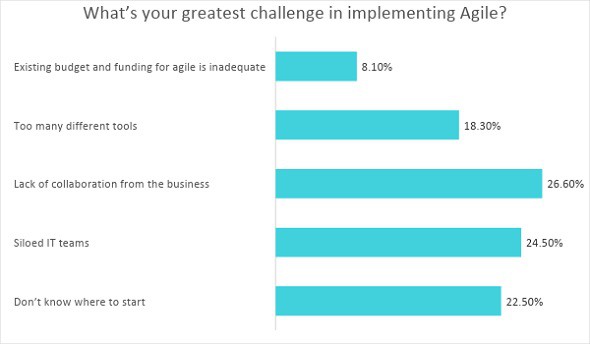Table of Content
When organizations begin their transition toward SAP S/4HANA, the expectation is that the ROI will be immediate. However, as with any transition, it can take months – if not years – to truly reap its benefits. While the technical upgrade for SAP S/4HANA can be a 3 month wait, an additional 9-15 months are needed for business process changes, customizations, and quality assurance.
Organizations looking to accelerate S/4HANA adoption will need to undergo their own changes by becoming more agile – another type of transformation many would find impossible to achieve simultaneously. Nevertheless, attempting any of the changes S/4HANA requires while in a waterfall delivery mode can significantly damper deadlines – while adopting new work methodologies such as agile during a complex technical transformation can bring challenges of its own.
But with the right tools, this doesn’t have to be an either/or situation.
During our recent webinar, Agile Practices for Transitioning to SAP S/4HANA, we asked participants what their greatest challenge is when it comes to implementing Agile. Here’s what they had to say:
Budgets aside, the challenges are intertwined – lack of collaboration from the business, too many tools, and siloed IT teams.
Lack of Collaboration From the Business
More often than not, the SAP delivery tool chain runs across large, globally dispersed organizations with cross functional teams. As a result, execution processes are hindered with unwanted delays and possibly wrong outcomes. IT teams need to collaborate from the start to ensure the plan, build, verify and release stages are most efficient and effective.
————
You might also like our blog
Agile Culture Vs. Agile Tools
————
When it comes to agile and its best practices, collaboration is key. In the Forrester report, The State of Agile 2017, behavioral change is identified as the biggest roadblock in implementing agile and collaboration is no doubt a part of this. To support a transition to S/4HANA, organizations need to leverage a solution which has built-in collaborative capabilities presenting clear release scope objectives which enables teams to work collaboratively on the same objectives through connected activities and workflows.
With Panaya Release Dynamix, collaboration is seamlessly achieved. On the one hand, built-in communication functionalities enhance collaboration among globally dispersed stakeholders for quick and effective communication between release managers, testers, developers – and business teams. On the other hand, automated handover of activities supports collaboration by automatically passing the baton to the next tester in an end to end business process, with full visibility into the activities of the previous tester.
Too many different tools
While collaboration and team communication are essential components of agile, they cannot exist when teams are using multiple tools to operate and track progress – which is especially true for cross-functional teams. The lack of visibility into overall project status and progress makes it almost impossible to truly track and monitor both potential red flags and project success. In addition, managers are continuously chasing after business and IT stakeholders to gain the information necessary to understand status and quality and then working laboriously to create status updates – manually. The need? A solution which can intelligently and automatically provide real-time risk analysis of release progress for multiple project waves from all resources.
Panaya Release Dynamix provides a requirement centric view so that managers gain visibility into completion status across development and testing. As a result, quality issues can be detected early, cross project defects can be identified, and test plans can be created at the start and mapped to the specific requirement. This multidimensional view into the impact of change and risk to release provides IT managers with data-based decision making that enables a more proactive approach to delivery.
———-
You might also like our blog
Agile Versus Waterfall – How to Select the Right Tool for the Job
———-
Siloed IT teams
When it comes to change delivery, most involved in the software development process are well versed with the fact that timelines are rarely met and delays are among the more assured things. This is no different when making SAP changes or undergoing system upgrades. Delays are often further enhanced by the fact that each process depends on specialized teams to handle each stage which, over time, create silos and any communication with external stakeholders becomes almost obsolete. The result? Poor execution processes, delays, and even wrong outcomes.
Back to the discussion around communication (pain point #1), if SAP application changes are driven by the business, there needs to be a continuous flow of information between IT and the business who, at the end of the day, must sign off on the project.
With a collaborative solution presenting clear release scope objectives, cross-functional teams can break silos by naturally and effortlessly working together. Panaya Release Dynamix does just that with automated notifications and handover of steps, relieving bottlenecks and ensuring optimal workflows and sequences.
Learn more about best practices when transitioning to S4/HANA. Check out the webinar Agile Practices for Transitioning to SAP S/4HANA, which covers the following topics:
- Five tips for implementing both SAP S/4HANA and agile practices
- Understanding the changes that a move to SAP S/4HANA requires
- Selecting the best-fit solution to support a transition to SAP S/4HANA


